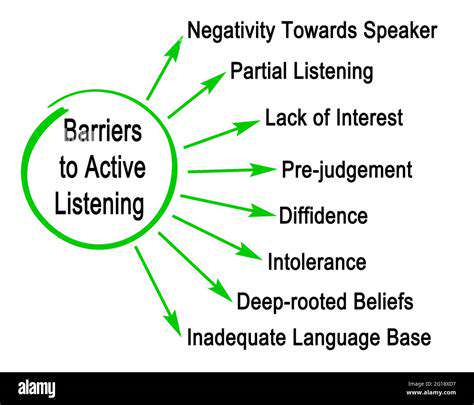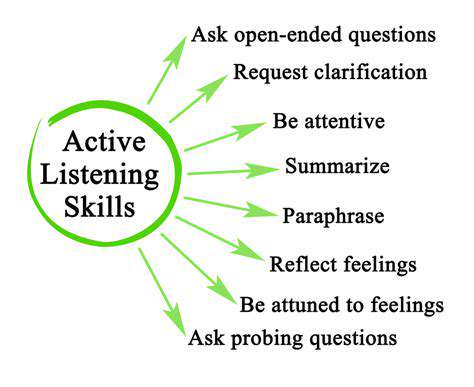How to Improve Your Listening Comprehension

Developing Active Listening Techniques

Understanding the Fundamentals of Active Listening
Active listening is more than just hearing; it's a conscious effort to understand and interpret the speaker's message, both verbally and nonverbally. It requires focused attention and a genuine desire to comprehend the other person's perspective, rather than simply formulating a response. This involves paying close attention to the speaker's words, tone of voice, body language, and even their silences. Effective active listening promotes deeper connections and fosters trust in relationships.
Understanding the speaker's emotional state is crucial to active listening. Recognizing underlying emotions, such as frustration, happiness, or sadness, allows for a more empathetic and supportive response. This deeper understanding goes beyond just acknowledging the words being spoken and delves into the underlying meaning and intent behind them.
Minimizing Distractions for Enhanced Focus
Creating a conducive environment for active listening is paramount. This involves minimizing distractions, both internal and external. Internal distractions include thoughts about unrelated matters, concerns, or personal worries. External distractions could be noisy surroundings, interruptions, or other competing stimuli. Being mindful of these distractions and actively working to eliminate them is key to effective listening.
Physical factors, like ensuring good posture and maintaining eye contact, can also help you stay present and focused on the speaker. Paying attention to your surroundings and the speaker's body language, and actively adjusting your own behavior to create a more conducive environment, is a critical part of active listening.
Responding with Empathy and Validation
Active listening goes beyond simply hearing; it involves showing the speaker that you understand and value their perspective. This can be achieved through verbal and nonverbal cues, such as nodding, maintaining eye contact, and using empathetic phrases.
Empathetic responses demonstrate understanding and validation of the speaker's feelings. Acknowledging and validating the speaker's emotions creates a safe space for them to express themselves fully and openly, leading to improved communication and stronger relationships.
Asking Clarifying Questions
To ensure complete understanding, asking clarifying questions is essential. Instead of interrupting or formulating a response immediately, take the time to ask thoughtful questions that encourage the speaker to elaborate on their thoughts and feelings. These questions should demonstrate curiosity and a genuine desire to understand, rather than a need to control the conversation.
Asking well-placed questions shows that you are actively engaged and invested in the conversation. This also allows for a deeper understanding of the speaker's perspective and avoids misunderstandings that could arise from assumptions.
Summarizing and Paraphrasing for Confirmation
Summarizing and paraphrasing what the speaker has said demonstrates your attentiveness and understanding. This process involves restating the speaker's key points in your own words, ensuring that you've grasped their message accurately. This confirmation process is essential for ensuring that you've correctly understood the speaker's perspective.
By summarizing and paraphrasing, you actively confirm your understanding of the message and demonstrate your commitment to effective communication. It also gives the speaker a chance to clarify or correct any misinterpretations.
Practicing Active Listening in Daily Interactions
Developing active listening skills requires consistent practice. Making a conscious effort to apply these techniques in everyday conversations, from casual chats to important meetings, can significantly improve the quality of your interactions. Actively practicing active listening in everyday situations will help you improve your ability to understand and respond effectively.
Practicing active listening is an ongoing process that requires effort and dedication. The more you practice, the more natural and effective your listening skills will become, leading to more meaningful and productive interactions across a range of relationships and situations. It is a valuable skill that can enhance all aspects of your life.












